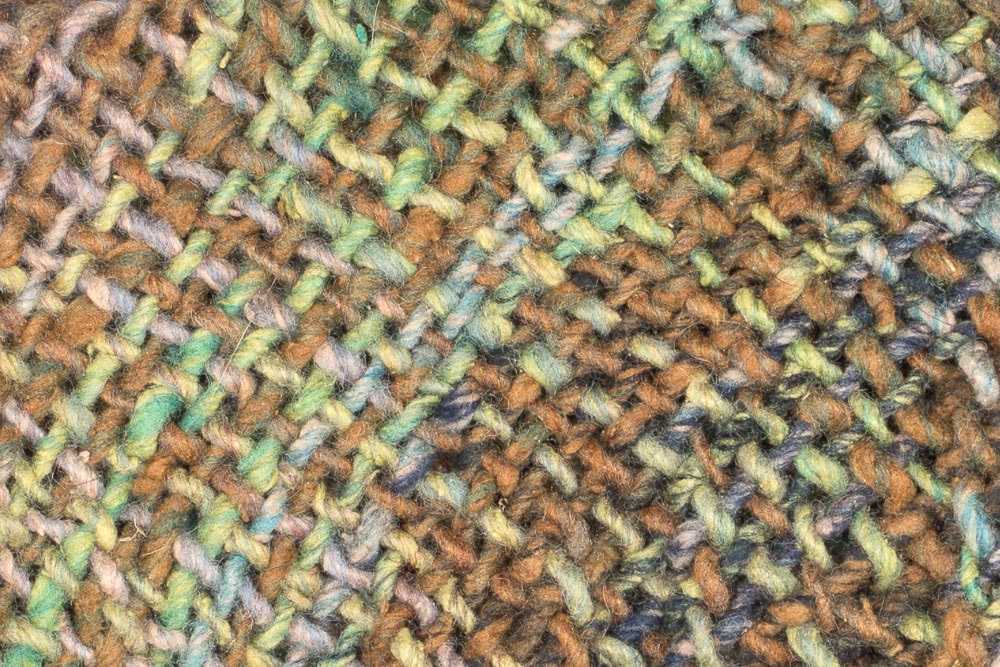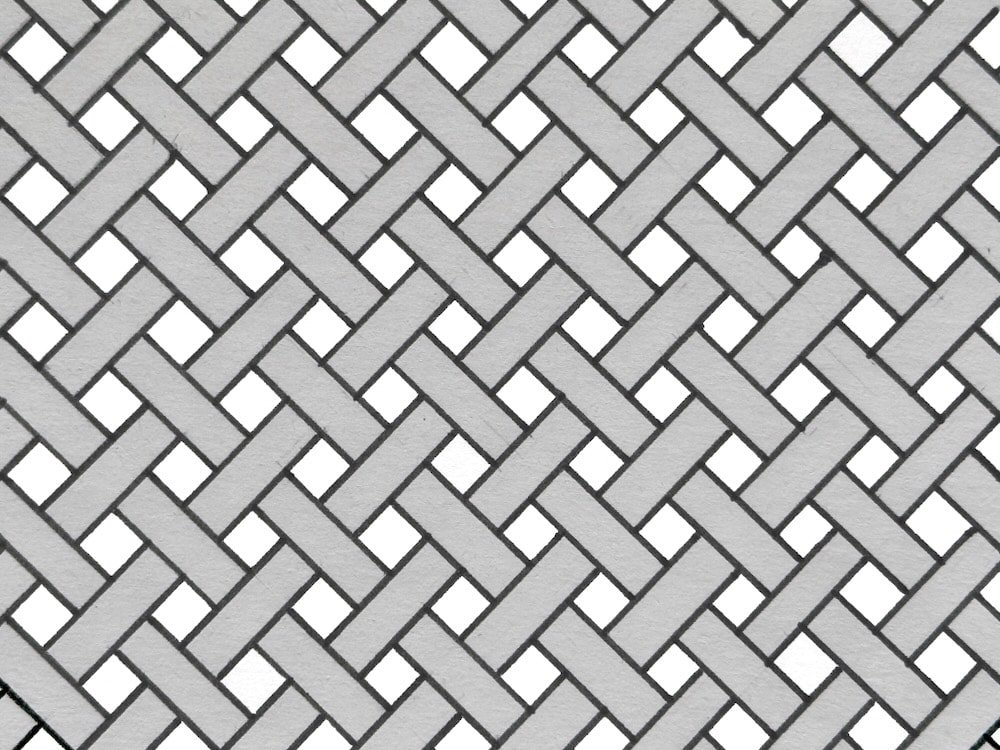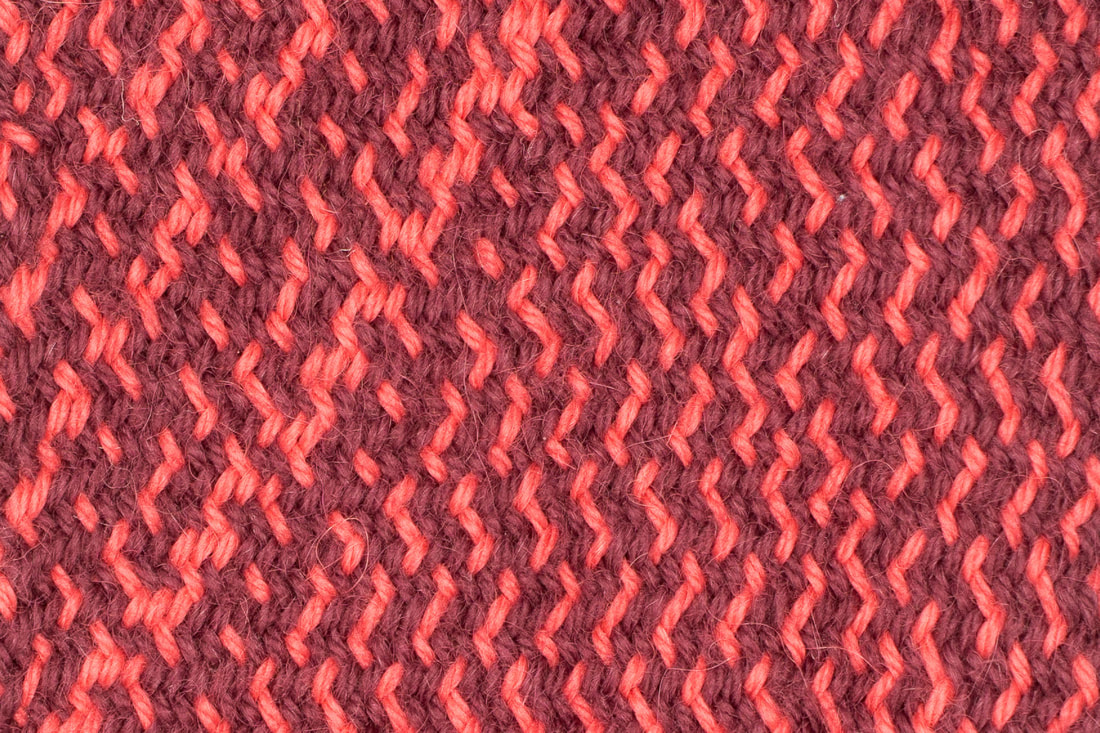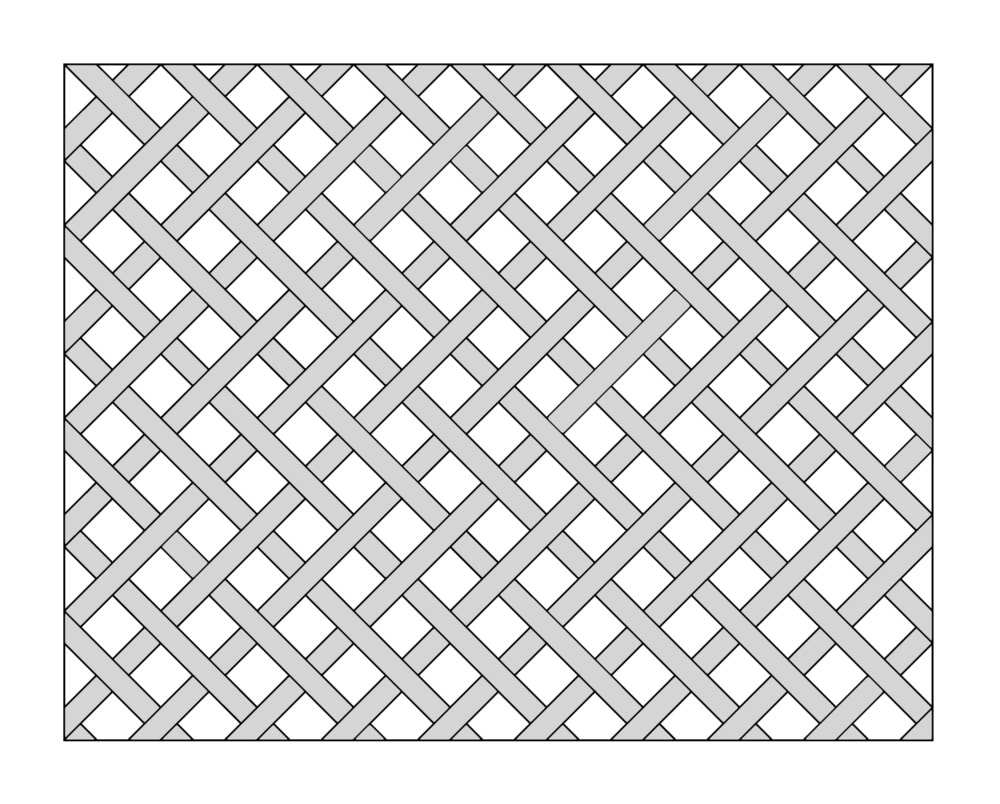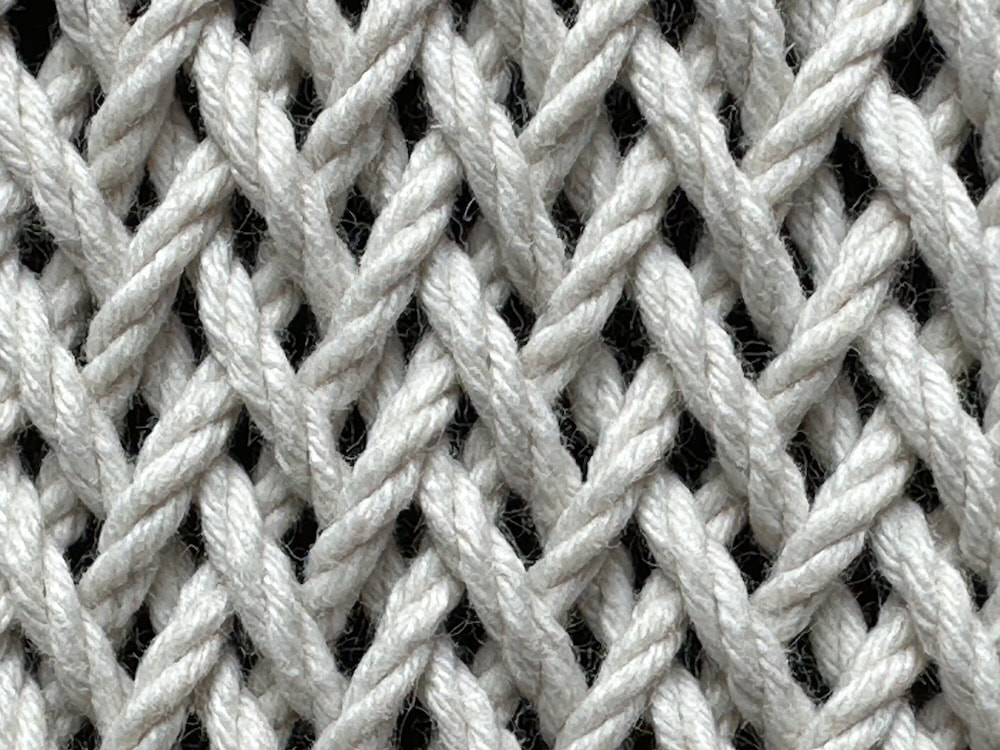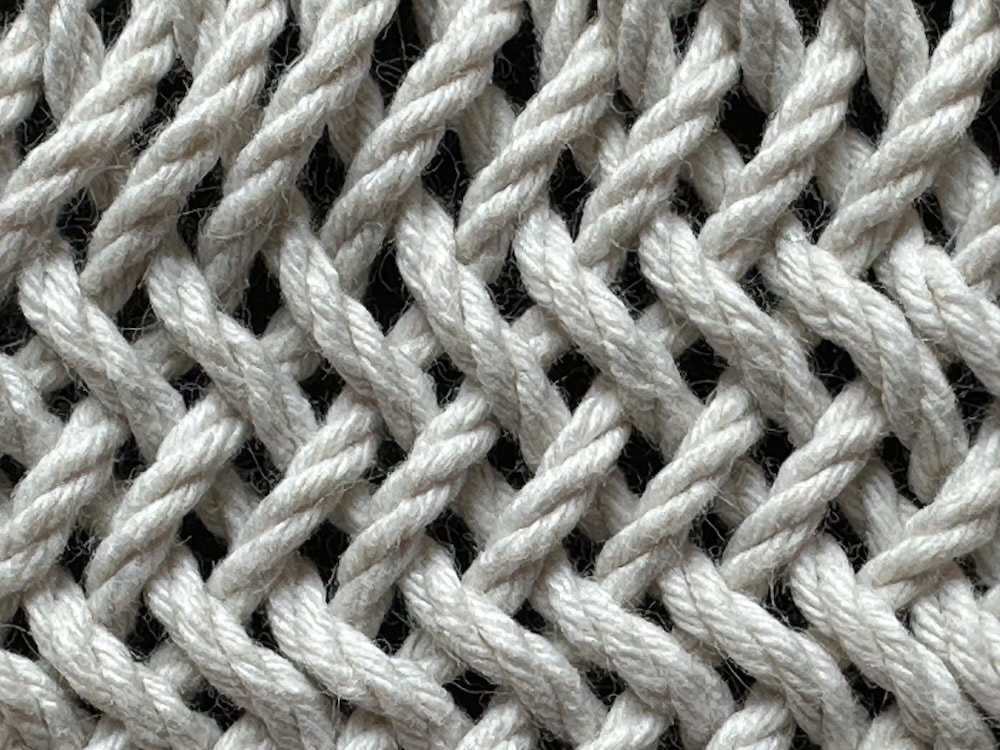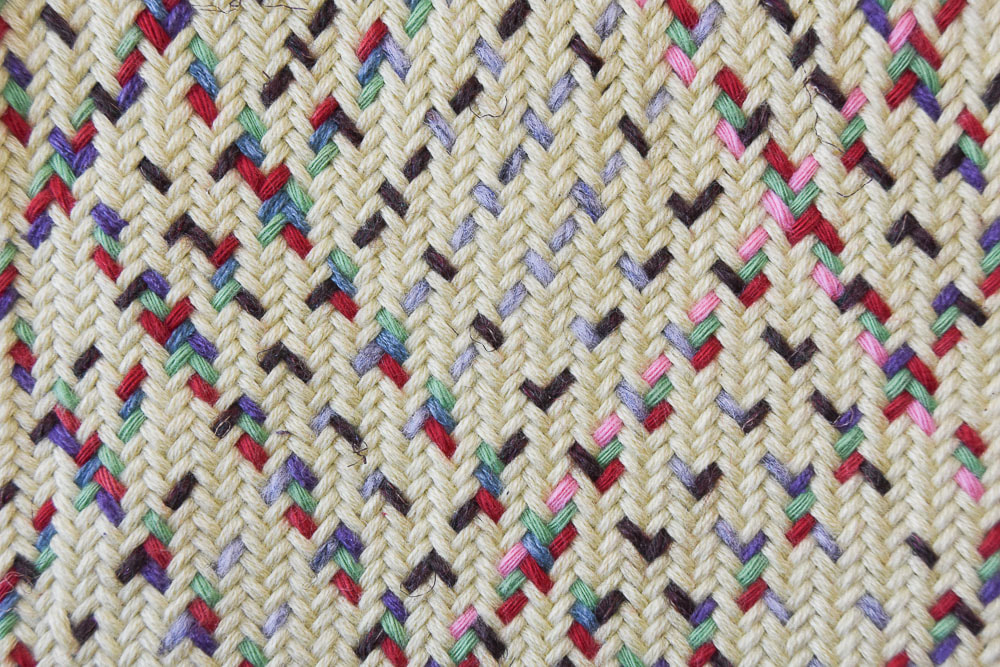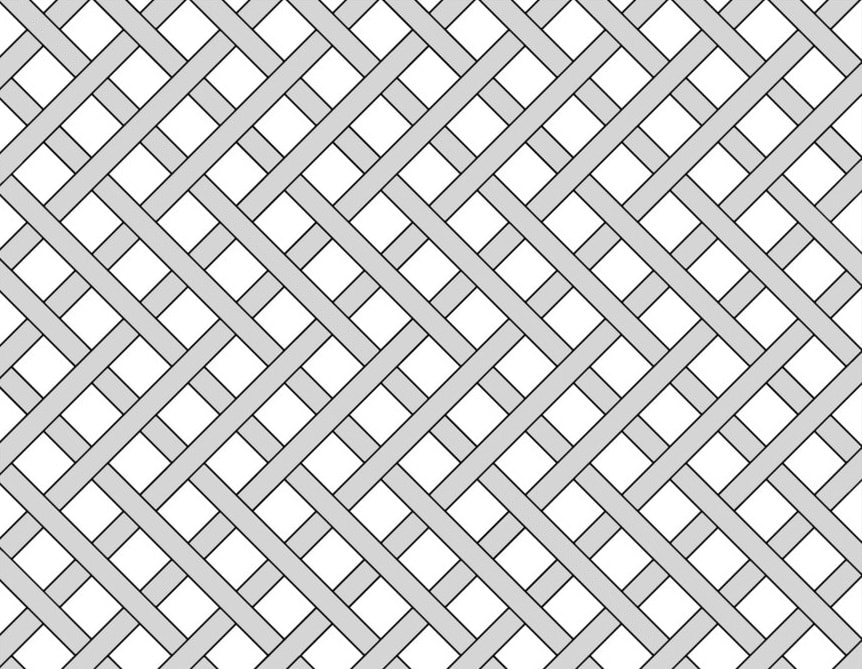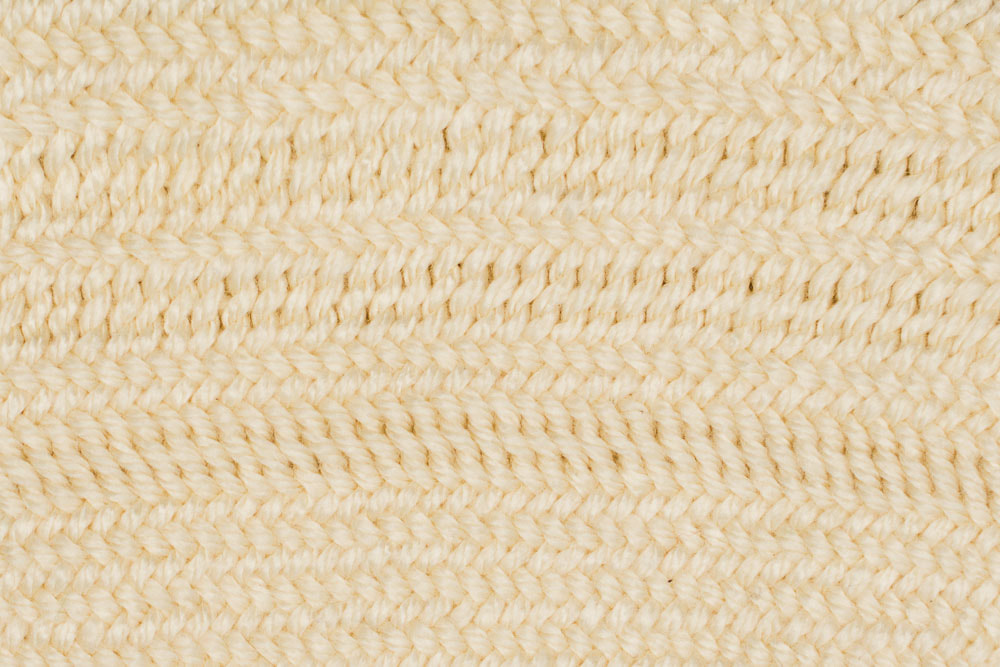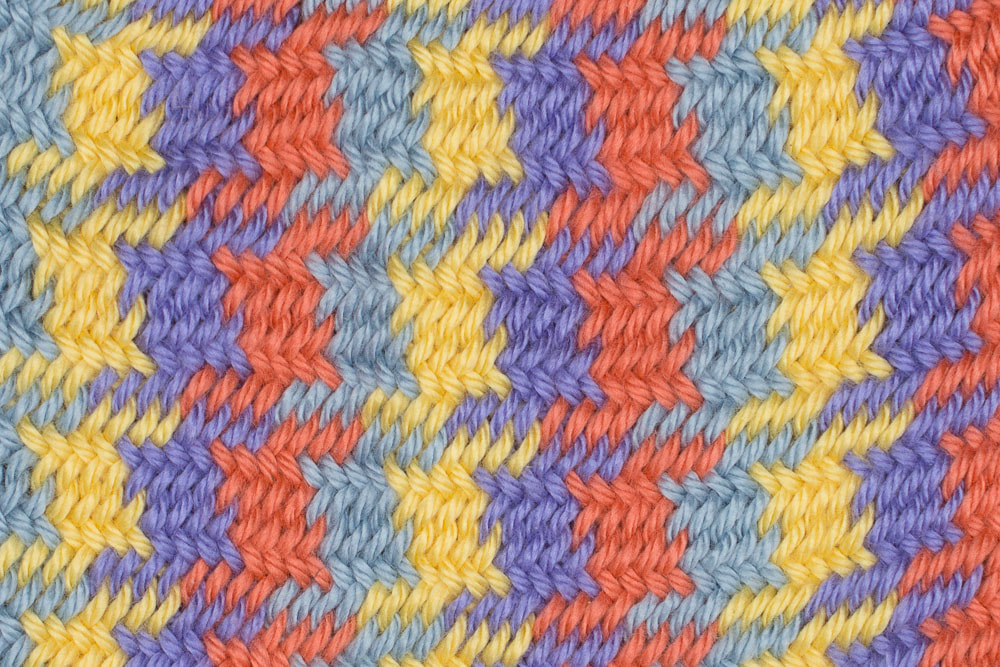Interlacing is essentially a diagonal weave, though without weft threads the technique is braiding rather than weaving. The method is the same as interlinking, though instead of working always from the same side to create a chain-link-fence structure, each row is worked in the opposite direction of the previous row. This produces alternate rows of S-leaning threads and Z-leaning threads.
1-1 Interlacing
In 1-1 interlacing, each thread goes over one thread, then under one thread. This often creates a loose weave structure.
2-2 Interlacing
In 2-2 interlacing, each thread passes over two threads, then under two threads, creating a twill pattern.
Depending on way 2-2 interlacing is created, the threads can be at a steeper angle to create vertical ribs (as in the photo above), or the threads can lie more perpendicular to the edges, creating horizontal ribs.
Interlacing and Interlinking
When rows of interlacing are interspersed with rows of interlinking a wide range of patterns and textures can be created.

